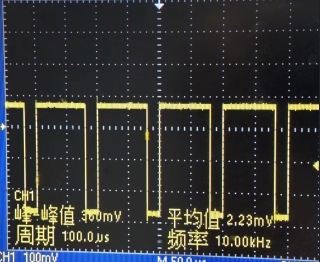04-Expansion_Pins_Testing
K4B Extension Pins

Serial Ports
Check device nodes
Serial port device nodes explanation:
TTL signals are on the expansion pins; RS485/232 signals are on the white terminals.
ttyS1↔ UART1 (RS485)
ttyS5↔ UART5 (RS232)
ttyS3↔ UART3 (Debug port)
ttyS4↔ UART4 (TTL)
Set baud rate
Send data via serial port
Receive data
GPIO
sys LED Control
GPIO pins can be registered as LEDs for direct control via the brightness node.
Check registered LEDs
Example: Control PD14 pin
Sunxi GPIO Control
PWM
Output waveforms
Normal polarity:

Inversed polarity:

SPI
Test command
Hardware setup: Short-circuit PIN19 and PIN21.

I2C
Allwinner TWI bus = I2C bus.

USB
Supported pins: PIN9, PIN11, PIN13, PIN15 (for USB devices).
Last updated